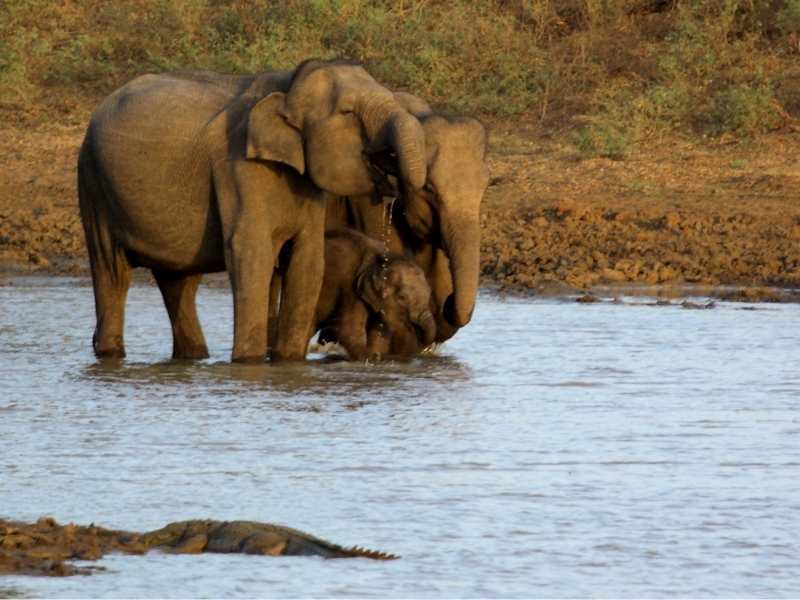
We’re not talking about the beach when we say “Wild Goa.” We’re talking about pristine woods, dense jungles, rugged cliffs, secret waterfalls, quiet beaches, and unusual species. Many sites here are rarely visited by travelers looking for adventure. However, there are several places where you can readily go on off-the-beaten-path adventures.
Between November and February is the optimum time to visit these locations. The temperature lowers, making the journey more bearable. Furthermore, most of them are located outside of the city and are reasonably safe.
Goa contains seven wildlife sanctuaries, which were established to conserve numerous types of mammals, birds, reptiles, and other natural creatures. In fact, because the majority of Goa’s sanctuaries are located in the Western Ghats, it is the only state that has preserved the whole mountain range inside its borders. The region’s thick and lush green forest cover has created an environment suited for hundreds of species of flora and fauna. All you nature lovers, wildlife enthusiasts, animal lovers, bird watchers, and conservationists will learn a lot and be enchanted by nature’s beauty here.
Bondla Wildlife Sanctuary is only 8 square kilometers in size and is located in Goa’s Ponda district, overlooking the western ghats. Its small size makes exploring the refuge manageable and fascinating for both children and adults, as well as travelers and wildlife aficionados.
Bondla Zoo’s Animal List
Nature lovers who visit Bondla Wildlife Sanctuary can explore it in a single day or stay overnight in the eco-tourism cottages to learn more about the various flora and animals. Aside from the animals and birds roaming about the sanctuary, you can also partake in some popular activities such as a safari in the Deer safari park, where you may see hog deer, spotted deer, barking deer, and mouse deer.
Hiking or trekking on a number of natural routes across the sanctuary accompanied by qualified guides is available for adventure seekers looking for their next thrilling pastime. The refuge also features a botanical garden, a rehabilitation center, and a zoological park, which are all popular with tourists, particularly children and families.
Mhadei Wildlife Sanctuary, located in the northern portion of Goa in the Western Ghats, is one of the state’s newest and largest sanctuaries, covering a wide area of 208 square kilometers and ensuring the safety of the rich plant and animal species that call it home. This sanctuary draws nature lovers, animal enthusiasts, ornithologists, and adventure seekers due to its unusual flora and fauna and beautiful topography.
The barking deer, India gaur, Asian palm civet, little Indian civet, ruddy mongoose, wild boar, Indian hare, sambhar deer, and our distant relatives (just kidding!) the Bonnet Macaque and the black-faced langur are among the many species of wild creatures and reptiles you’ll see. However, there are a few animals that avoid roaming in the open in front of people, and spotting them is extremely rare, so keep your eyes peeled! Big cats like the Black Panther, Royal Bengal Tiger, and Leopard are among them, as are flying squirrels, gigantic squirrels, mouse deer, sloth bears, Indian pangolins, and slender Lori. Mhadei Wildlife Sanctuary is home to 255 bird species and 257 butterfly species, as well as the “big four” of the reptile family of Indian venomous snakes: Spectacled Cobra, Russell’s Viper, Indian Krait, and Saw-scaled viper.
If you enjoy lounging on the picturesque beaches of South Goa while sipping cocktails or beers, it’s time to get moving. Anyone who enjoys spending time in nature should schedule a trip to the Cotigao Wildlife Sanctuary while in South Goa. Cotigao, located in the Canacona region near the Goa-Karnataka border, is a one-day escape from Palolem beach, its white sand, and the sea.
Bhagwan Mahavir Wildlife Sanctuary, the largest wildlife reserve in Goa, is located in the foothills of the Western Ghats and covers an impressive 240 square kilometers in eastern Goa. Declared a wildlife sanctuary in 1969 to safeguard the region’s tremendous biodiversity, a core area of 107 square kilometers was designated a national park in 1978 and is now known as the Mollem National Park. So, when you visit Bhagwan Mahavir Wildlife Sanctuary, be prepared to experience nature at its purest!